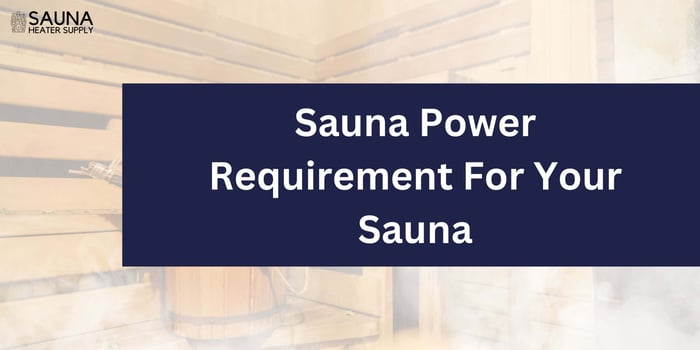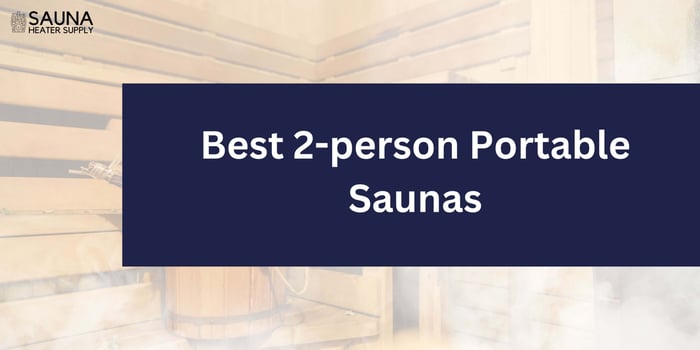Table of Contents
When customers buy a sauna from us, we always recommend checking if it’s compatible with their home’s sockets and main electrical panel.
Each sauna’s power requirements are listed in the product description. Most sauna heaters need a 240V connection and have to be hardwired to your electrical panel.
If you’re going for a 4.5kW or 6.0kW heater, you’ll need a 30-amp breaker and 10/2 wiring. If the sauna is more than 30 feet from the breaker, you’ll need an 8/2 wire instead.
This guide covers everything, from Infrared sauna power requirements to the best spots to place your sauna at home. Let’s make sure you get it right the first time!
Sauna Electricals: Choosing A Location Within the Home
First of all, many of your considerations will depend on whether it’s an indoor or outdoor sauna placement.
INDOOR
SaunaLife Model X7 Indoor Home Sauna
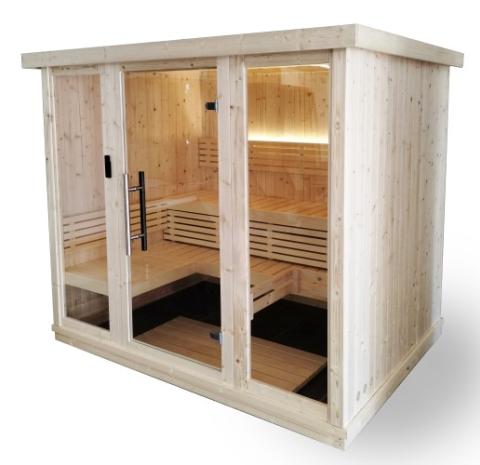
$5,790.00
$7,237.50
SaunaLife Model X7 Indoor Home Sauna The SaunaLife X7 Indoor Home Sauna combines luxury and affordability with innovative design, making it a perfect addition to any home gym or spa. Crafted from premium 1-½" Norice Spruce planks, the sauna features… read more
Before setting up your indoor sauna, keep two key things in mind: Place it on a solid, stable surface and Keep it in a dry area to avoid damage.
Your sauna is a freestanding unit—no need to build it into walls or other structures.
Leave at least 3 inches of space around the top and sides to easily access the power cord.
Since moisture can damage the inside and outside of your sauna, choose a location that stays dry.
Great spots include your basement, attic, garage, playroom, spare bedroom, or garden chalet.
OUTDOOR
If you plan to set the electric sauna outside, you must use a cover to protect it. Never place your sauna on a surface that gets wet easily.
Check for nearby access to electricity
Position the sauna in a sheltered area. The goal is to reduce wind exposure and maintain temperature stability.
Ideal places outdoors include near a pool, patio, or outdoor shower.
Power Requirements for Home Saunas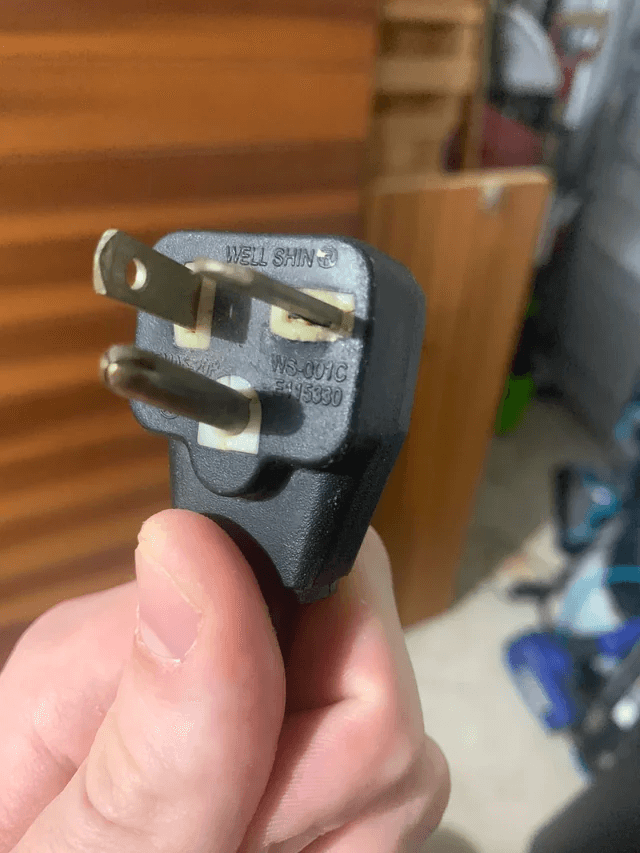
Sauna unit plug
This greatly depends on whether you’re buying an infrared, steam, or traditional (Finnish) sauna and whether the heater is wood-fueled or electrically generated.
SAUNA TYPE | POWER REQUIREMENT |
Infrared sauna | 110/120 Volts |
Traditional sauna with a wood-burning heater | 110/120 V for lighting and outlets (none if you don’t use extra lighting). |
Traditional sauna with an electric heater | 220/240 V |
For Infrared Saunas
Finnmark FD-3 Full Spectrum Infrared Sauna
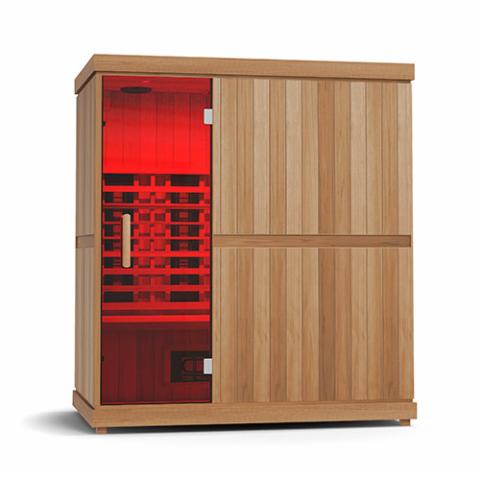
$6,495.00
$8,118.75
Finnmark FD-3 Full Spectrum Infrared Sauna Stretch out and relax in Finnmark Design’s FD-3 Full-Spectrum 3 to 4 person infrared home sauna. Create a daily wellness retreat in the comfort of your own home. Finnmark Designs is the only infrared… read more
These warm your body directly using infrared heat instead of heating the air. They run at 120–140°F and can be more comfortable for longer sessions (30–60 minutes).
For the electricals, it depends on the capacity of the model.
For example, models like the Finnmark FD-1 to Full-Spectrum with 120V and 1750W require an Outlet Standard of 120v 15a with single phase plug type and use the NEMA 5-15P.
If this is not around the space where you place the sauna, you’ll need to run electrical wires through the walls and ceiling to where the sauna controls will be.
For Traditonal Saunas
A traditional sauna typically requires a high power supply, usually around 220-240 volts, with a power draw ranging from 4.5kW to 9kW, depending on the sauna size.
This also means it needs to be hardwired into the electrical system with a dedicated circuit and a high amperage breaker (usually 30-40 amps) to handle the load safely.
OTHER REQUIREMENTS:
Run electrical wiring for the controls and lights using heat-resistant wires.
Cover walls with waterproof sheets and seal them properly.
Use cement backer boards or special sauna wall panels to handle heat and moisture.
Install moisture-proof frames for benches and other parts using stainless steel fasteners.
Use slotted channels and stainless steel fasteners to allow for wood expansion.
For Steam Saunas
The power needed for a steam sauna depends on its size. Generally, it requires 1.2kW to 2kW per cubic meter of space.
This means larger steam rooms need more power than smaller ones.
Most steam generators run on a 220V power source and may need a separate circuit because they use a lot of electricity.
Wiring Requirements for Electric Saunas
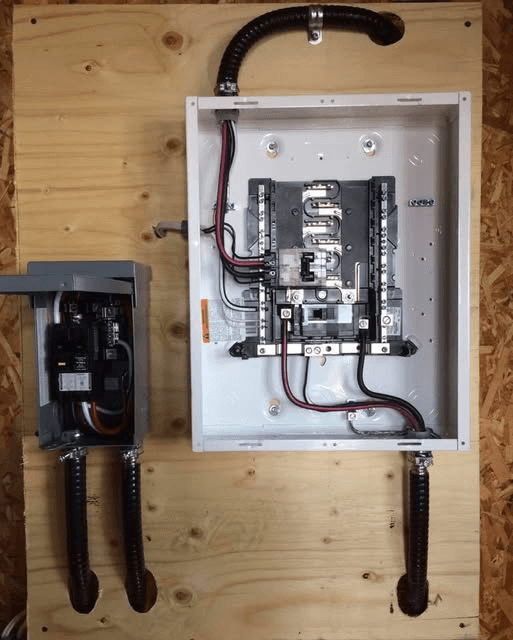
Sub-panel and spa pack wiring for sauna unit
Only a qualified electrician should install wiring for an electric sauna heater.
If you're not experienced in handling electrical work, it's best to hire a professional.
The job is usually quick and affordable, and you'll have peace of mind knowing it's done safely and in line with electrical codes.
Usually, it would involve setting up a breaker (40–50 amps) in your breaker box, using the correct wire gauge, and running it to the back wall of your sauna.
Thereafter, you connect the cable inside the sauna to a circuit protector or a disconnect box.
Then, the wires will run from the disconnect box to a junction box for the sauna heater. Afterward, the sauna heater’s wires are attached to the junction box.
Common Problems with Suauna Power Requirements (+Solutions)
PROBLEM | SOLUTION |
Wrong A.C. Power cord | It’s usually a result of using the wrong outlet to power your sauna. So you have to check the model’s specifications and change your outlet. |
The House circuit breaker is tripping | Check that the breaker's amperage corresponds with your sauna's amperage rating. |
Finally, ensure that the circuit used for your unit is not overloaded by having too many appliances on one circuit.
If it’s your first time buying and installing a sauna at home and you have little to no electrical knowledge, it would be best to hire a local sauna technician near you.
FAQs
What voltage is needed for a sauna?
Most home infrared saunas use 120V, while traditional electric saunas require 240V for faster heating and better efficiency. Commercial saunas may need even higher voltages.
Best conduit for sauna wiring
The best conduit for sauna wiring is liquid-tight flexible metal conduit (LFMC) or non-metallic conduit (LNFC). These protect the wires from heat and moisture.
How much current does a sauna draw?
A sauna’s current draw depends on its size and power rating. Small infrared saunas typically draw 10-20 amps, while larger traditional saunas require up to 40 amps.

